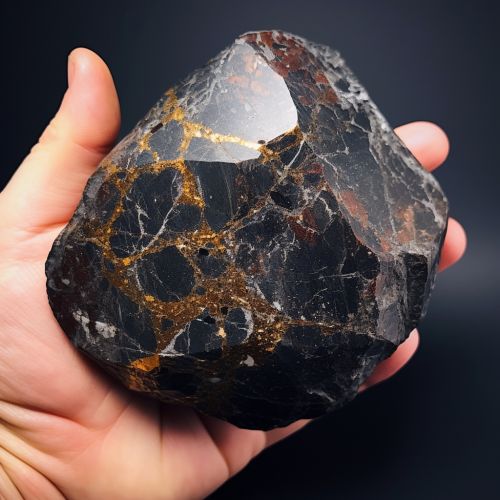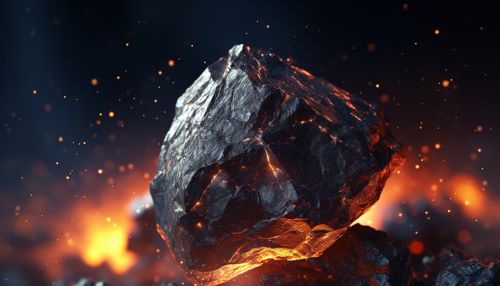Meteorite
Introduction
A Meteorite is a solid piece of debris from a celestial object, such as a comet, asteroid, or meteoroid, that survives its passage through the Earth's atmosphere and impacts the Earth's surface. Meteorites are believed to originate in the asteroid belt between the orbits of Mars and Jupiter. A meteorite differs from a meteoroid in that the latter is still in space. When the object enters the atmosphere, various factors such as friction, pressure, and chemical interactions with the atmospheric gases cause it to heat up and radiate energy. It then becomes a meteor and forms a fireball, also known as a shooting star or falling star.


Classification
Meteorites are classified into three broad types: stony meteorites, iron meteorites, and stony-iron meteorites. Each of these types can be further divided into several sub-groups.
Stony Meteorites
Stony meteorites are further divided into two main types: Chondrites and Achondrites. Chondrites are the most common type of meteorite and are named for the tiny, round particles they contain. These particles, or chondrules, are composed of minerals that crystallized from molten droplets in the early solar system. Achondrites, on the other hand, are meteorites that do not contain chondrules.
Iron Meteorites
Iron meteorites, also known as sidereal irons, are a type of meteorite that consists overwhelmingly of an iron-nickel alloy known as meteoric iron that usually consists of two mineral phases: kamacite and taenite. Iron meteorites originate from planetary cores of planetesimals.
Stony-Iron Meteorites
Stony-iron meteorites constitute the remaining 2% of meteorites. They are a mixture of iron-nickel metal and silicate minerals. Two types are known: Mesosiderites and Pallasites.
Formation
Meteorites are remnants from the early solar system, approximately 4.6 billion years ago. They are believed to have originated from the asteroid belt, a region of space located between the orbits of Mars and Jupiter. This region is populated by a vast number of irregularly shaped bodies, known as asteroids or minor planets.
Impact
Meteorites have played a significant role in Earth's history. They have caused mass extinctions, such as the event that led to the extinction of the dinosaurs 65 million years ago. Furthermore, the Hadean period of Earth's history, which occurred about 4.6 to 4.0 billion years ago, is believed to have been a time of heavy meteorite bombardment.
Meteorite Hunting
Meteorite hunting is the search for meteorites. A person engaged in the search for meteorites is known as a meteorite hunter. Meteorite hunting is a difficult and painstaking process that requires knowledge of geology, the ability to recognize meteorite evidence, and a good deal of patience.
